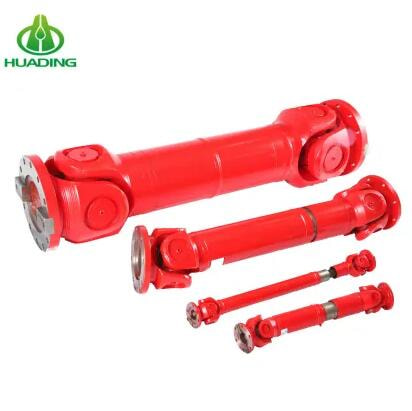How do I choose a cardan shaft?
Apr. 30, 2024
A Comprehensive Guide to Selecting the Right Cardan Shaft
Choosing the right cardan shaft, also known as a universal joint shaft or propeller shaft, is crucial for ensuring efficient power transmission and minimizing vibrations in various mechanical applications. Here's a comprehensive guide to help you navigate through the selection process:
1. Application Requirements:
Identify the specific requirements of your application. Consider factors such as the amount of torque, speed, and the angle of misalignment the cardan shaft will need to accommodate. Different applications, such as automotive, industrial machinery, or marine systems, may have unique demands.
2. Operating Torque and Speed:
Determine the maximum torque and rotational speed that the cardan shaft will experience during operation. Choose a cardan shaft with a torque rating and speed capacity that comfortably exceeds the requirements of your application to ensure a reliable and long-lasting performance.
3. Angular Misalignment:
Consider the degree of angular misalignment that the cardan shaft must accommodate. Cardan shafts are designed to handle angular misalignments, but the amount varies among different types. Double Cardan or CV (Constant Velocity) joints are often preferred for applications with higher misalignment angles.
4. Length and Size:
Select the appropriate length and size of the cardan shaft based on the distance between the connected shafts. It’s crucial to measure the distance accurately to ensure that the shaft will fit properly and operate within its design parameters.
5. Environmental Conditions:
Consider the environmental conditions in which the cardan drive shaft will operate. Factors such as temperature, moisture, and exposure to corrosive substances can impact the choice of materials for the shaft. For harsh environments, corrosion-resistant coatings or materials may be necessary.
6. Type of Joint:
Cardan shafts come in various joint configurations, including single universal joints, double universal joints, and CV joints. The choice depends on the specific needs of your application. For example, CV joints are ideal for applications requiring smooth and constant angular velocity, such as automotive driveshafts.
7. Maintenance Requirements:
Evaluate the maintenance requirements of the cardan shaft. Some joints may require periodic lubrication, while others, like sealed CV joints, are maintenance-free. Consider the ease of maintenance and how it aligns with your operational needs.
8. Budget Considerations:
While it’s important not to compromise on quality, consider your budget constraints. Different manufacturers and suppliers offer cardan shafts at varying price points. Look for a balance between cost and quality to ensure a cost-effective solution without compromising performance.
9. Manufacturer Reputation:
Choose a reputable manufacturer or supplier with a track record of providing high-quality cardan shafts. Check reviews, testimonials, and product specifications to ensure that the selected shaft meets industry standards and specifications.
10. Customization Options:
If your application has specific requirements that off-the-shelf cardan shafts may not meet, inquire about customization options. Some manufacturers offer tailored solutions to accommodate unique specifications.
In conclusion, selecting the right cardan shaft involves a careful assessment of your application’s requirements, operating conditions, and budget constraints. By considering these factors and working with reputable suppliers, you can ensure the optimal performance and longevity of the cardan shaft in your mechanical system.
245
0
0
All Comments (0)
Previous: How Do I Choose a Cardan Shaft?
Next: None
If you are interested in sending in a Guest Blogger Submission,welcome to write for us!



Comments